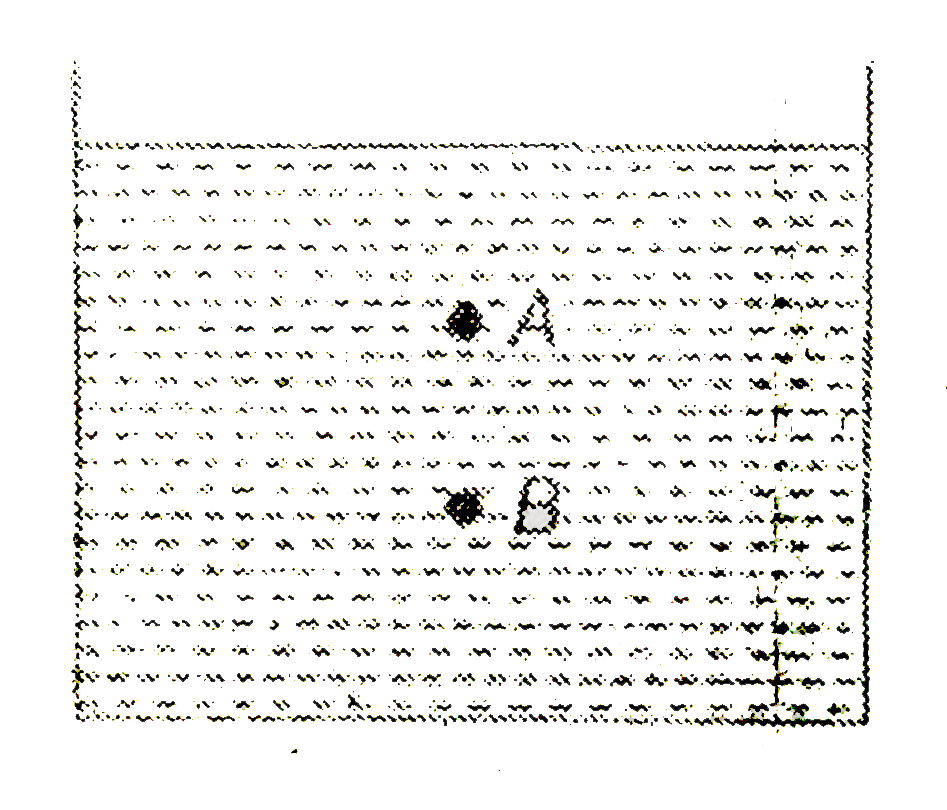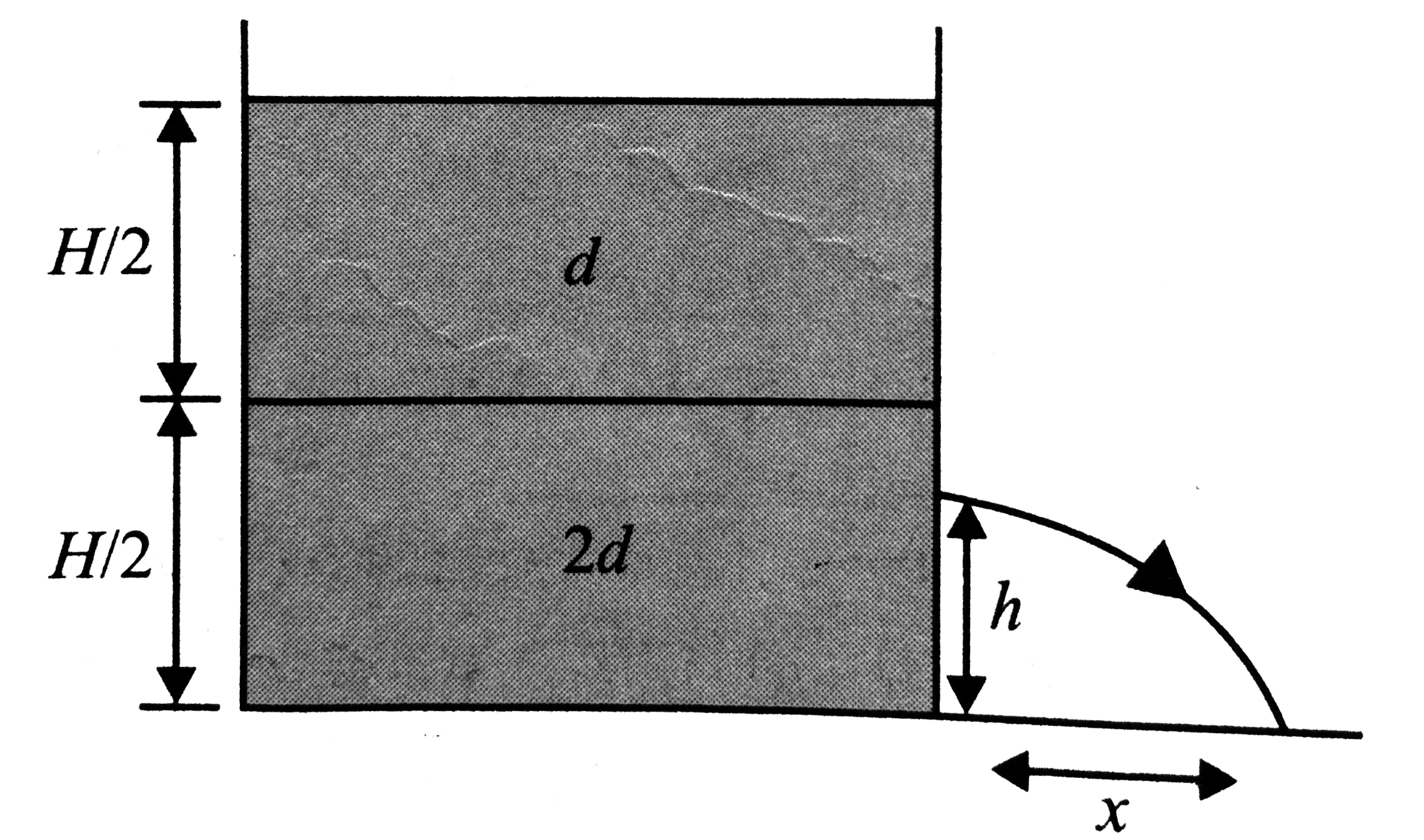Pressure at a point inside a liquid does not depend on
the nature of the liquid
shape of the container
the depth of point below the surface of the liquid
acceleration due to gravity at that point
The correct Answer is:B
To solve the question regarding what the pressure at a point inside a liquid does not depend on, we can follow these steps:
Step 1: Understand the Pressure Formula
The pressure P at a depth h in a liquid is given by the formula:
P=hρg
where:
- P is the pressure,
- h is the depth of the point below the surface of the liquid,
- ρ is the density of the liquid,
- g is the acceleration due to gravity.
Step 2: Analyze Each Option
Now, we will analyze each option given in the question:
1. Nature of the Liquid: The pressure depends on the density ρ of the liquid, which is related to its nature. Therefore, this option is incorrect.
2. Shape of the Container: The pressure at a specific depth in a liquid is independent of the shape of the container. This means that regardless of whether the container is wide or narrow, the pressure at the same depth remains the same. This option is correct.
3. Depth of a Point Below the Surface of the Liquid: As per the formula, pressure is directly proportional to the depth h. Thus, this option is incorrect.
4. Acceleration Due to Gravity at that Point: The pressure also depends on the acceleration due to gravity g. Therefore, this option is incorrect.
Step 3: Conclusion
From the analysis, the only factor that the pressure at a point inside a liquid does not depend on is the shape of the container. Thus, the correct answer is:
The pressure at a point inside a liquid does not depend on the shape of the container.
---
The pressure P at a depth h in a liquid is given by the formula:
P=hρg
where:
- P is the pressure,
- h is the depth of the point below the surface of the liquid,
- ρ is the density of the liquid,
- g is the acceleration due to gravity.
Now, we will analyze each option given in the question:
From the analysis, the only factor that the pressure at a point inside a liquid does not depend on is the shape of the container. Thus, the correct answer is:
Topper's Solved these Questions
- BOOK - NCERT FINGERTPS ENGLISHCHAPTER - MECHANICAL PROPERTIES OF FLUIDSEXERCISE - Higher Order Thinking Skills8videos
MECHANICAL PROPERTIES OF FLUIDS
- BOOK - NCERT FINGERTPS ENGLISHCHAPTER - MECHANICAL PROPERTIES OF FLUIDSEXERCISE - Exemplar Problems5videos
MECHANICAL PROPERTIES OF FLUIDS
- BOOK - NCERT FINGERTPS ENGLISHCHAPTER - LAWS OF MOTIONEXERCISE - Assertion And Reason15videos
LAWS OF MOTION
- BOOK - NCERT FINGERTPS ENGLISHCHAPTER - MECHANICAL PROPERTIES OF SOLIDSEXERCISE - Assertion And Reason15videos
MECHANICAL PROPERTIES OF SOLIDS
Similar Questions
Complete the following sentences:
(a) Pressure at a depth h in a liquid of density ρ is …......
(b) Pressure is …... In all direction about a point in a liquid.
(c ) Pressure at all points at the same depth is ….
(d) Pressure at a point inside a liquid is ....... to its depth.
(e ) Pressure of a liquid at a given depth is ....... to the density of liquid.View SolutionVapour pressure of a pure liquid does not depend upon
View Solution
Knowledge Check
- Question 1 - Select One
The pressure inside a liquid of density ρ at a depth h is :
AhρgBhρgChρgDhρ
Apparent expansion of liquid does not depend on
View SolutionSurface tension of a liquid is a molecular phenomenon of liquids involving the force of cohesion along the liquid molecules. It is scalar quantity and is numerically equal to the surface energy. Numerically, it is proved that the potential soluble salts and surface active substance. Sparingly soluble salts and surface active substances decrease the surface tension of the liquid. However, the fairly soluble solutes increase the surface tension of the liquid. Surface tension of a liquid is independent of surface area but it depends on the intermolecular forces and the temperature.
Surface tension of a liquid does not depend on :View SolutionState three factors on which the pressure at a point in a liquid depends.
View SolutionThe pressure at two points in a liquid in pascal are P and 2P. The piston attached to the mouth of the liquid is given a push with pressure 2 Pa. The respevtive pressures at the two points now are in the ratio
View SolutionThere are two point A and B inside a liquid as shown in figure. Now the vessel starts moving upwards with an acceleration a. Match the following.

∣∣ ∣ ∣ ∣ ∣ ∣ ∣∣Table-1Table-2(A)Pressure at B will(P)increase(B)Pressure difference(Q)decreasebetween A and B will(C)Upthrust on an object(R)remain sameinside the verssel will∣∣ ∣ ∣ ∣ ∣ ∣ ∣∣View SolutionThe rate of evaporation does not depend on .....
View SolutionFluids at rest exert a normal force to the walls of the container or to the sruface of the body immersed in the fluid. The pressure exerted by this force at a point inside the liqid is the sum of atmospheric pressure and a factor which depends on the density of the liquid, the acceleration due to gravity and the height of the liquid, above that point. The upthrust acting on a body immersed in a stationary liquid is the net force acting on the body in the upward direction. A number of phenomenon of liquids in motion can be explain by Bernoulli's theorem which relates the pressure, flow speed and height for flow of an ideal incompressible fluid.
A container of large uniform corss sectional area. A resting on a horizontal surface holds two immiscible, non viscous and incompressile liquids of densities d and 2d, each of height H/2 as shown in the figure. The lower density liquid is open to the atmosphere having pressure P0.
Situation I:
A homogeneous solid cylinder of length L(L<H/2). cross sectional area A/5 is immersed such that it floats with its axis vertical at liquid -liquid interface with lenght L/4 in the denser liquid.
The total pressure at the bottom of the container isView Solution

